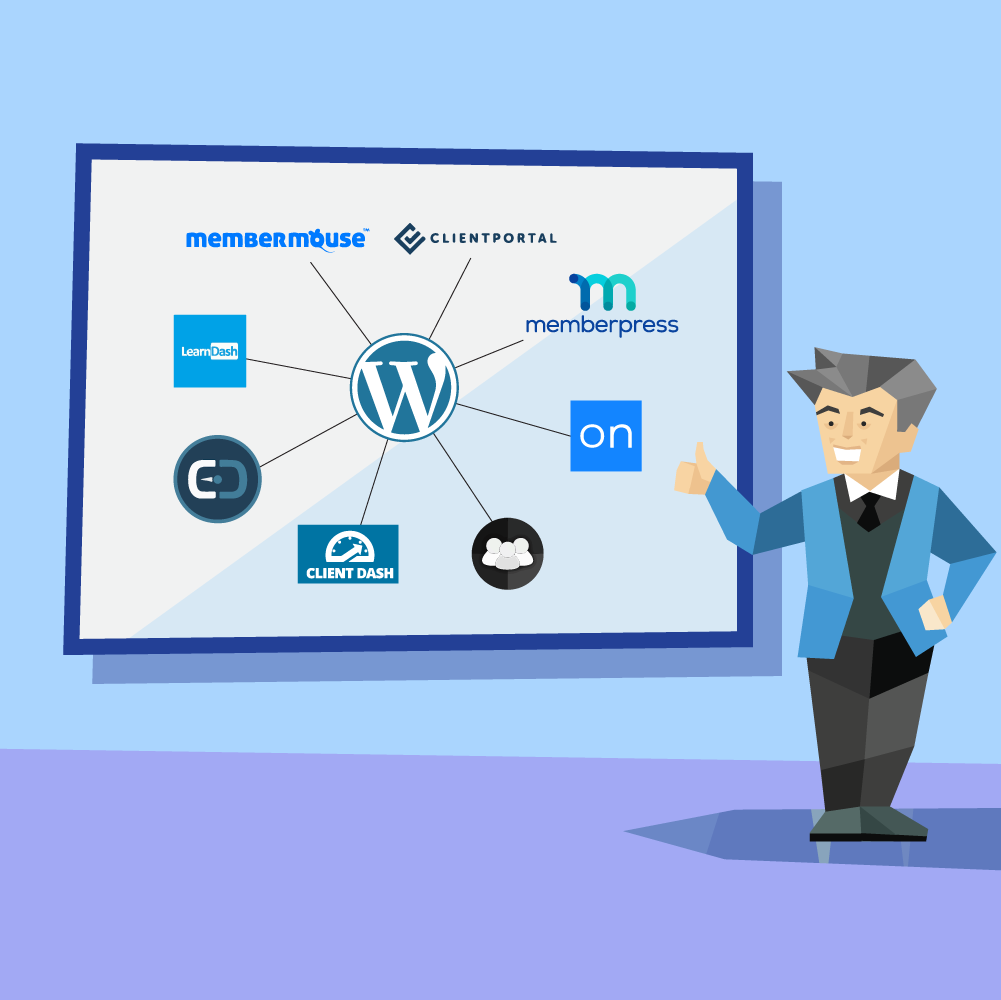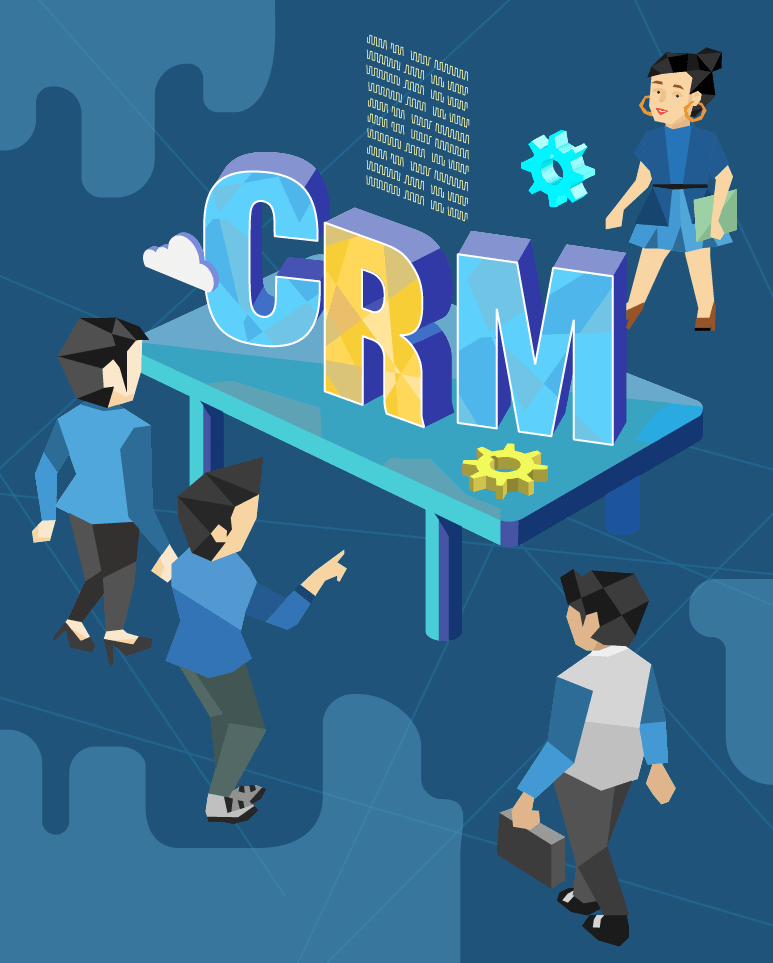An Introduction To Lead Generation: Why Quality Matters

A lead, as you probably know, is anyone who might be a potential customer—someone who has indicated interest of some kind in your brand. Attracting new leads is one of the primary goals of any marketing strategy.
However, many businesses assume that the more leads you attract, the better. While attracting lots of leads is a good thing, the quality of those leads has a big impact on whether or not they’ll become customers.
It’s better to have a dozen leads that might buy your product than a hundred leads that only have a passing curiosity in your product. This notion is something that you will need to consider when implementing a lead generation strategy.
Importance Of Lead Generation
Businesses spend a significant amount of time and money on their lead generation strategy, whether it’s on search engine optimization (SEO), Google ads, or content marketing. It’s the only way that a business can grow. Without new leads, you won’t have new customers. Without more customers, your business will stagnate. Lead generation is arguably the most important marketing objective that companies have.
Your success depends upon your ability to generate leads and close those leads. However, it is easier said than done since finding new leads can be quite challenging.
Lead Quality Vs. Lead Quantity
Lead quantity is easy to understand. It refers to the numbers game – the more leads you attract, the greater the chance you have of turning more leads into more customers. However, as the adage goes – focus on quality over quantity. Having this mindset attracts leads based on specific parameters that you set.
For example, let’s say you sell winter coats. If you focus on lead quantity, you may attract thousands of leads; however, many of these leads may not need a winter coat. Many of these leads may live in warmer climates. If you focus on lead quality, you won’t attract nearly as many leads. On the other hand, you can set your parameters to only attract leads who live in colder climates that require winter jackets, meaning that they are much more likely to turn into customers.
Lead Quality
Generally speaking, your lead generation strategy should focus on lead quality over lead quantity for the following reasons:
Higher ROI In The Long Run
The higher the ROI (return on investment), the better and the less you’re paying for positive results. The reason why focusing on lead quality results in a higher ROI is because you’re not wasting your marketing money on people who have no interest in your brand. Because the leads that you’re targeting are qualified, your ROI will end up higher in the long run. Focusing on lead quality allows you to spend your marketing dollars more efficiently.
Returning Customers
Higher quality leads are more likely to become repeat customers, which also contributes to a higher long-term ROI. Lead quality matters when it comes to the customer’s lifetime value as you nurture your customer relationships and improve customer loyalty.
Lead Quantity
Some might argue that despite a lack of focus on quality, casting a larger net will improve your chances of getting more customers in the long run. But this may not be true.
Easier To Generate
It’s true that if you don’t focus on lead quality, leads will be easier to generate. You won’t have any parameters that limit the size of your lead pool. If you focus solely on numbers, then attracting new leads won’t be as difficult.
Can Be A Drain On Sales Resources If Not Quality
Even though generating new leads becomes easier when you don’t limit your leads, you are spending your marketing budget on attracting poor quality leads, who are unlikely to close. This approach can prove to be a real drain on your resources.
You could argue that if you attract 1,000 leads instead of 100 quality leads, that you’re just as likely to close as many sales; however, there’s absolutely no guarantee. Every one of those 1,000 leads could be of poor quality, and none of those leads would close.
Which One Should You Focus On?
You may be thinking that lead quality probably seems like the way to go, since you’re more likely to close high-quality leads, resulting in a higher ROI. Yet, you don’t want to limit your potential audience too much either. Find the right balance between the two and try to focus on both quality and quantity. Granted, this can be quite a challenge.
Usually, a company’s marketing department will base its success on the number of leads generated, while a sales department will be more concerned about conversions. So which should you do?
The best way to go about your lead generation strategy depends on where you are as a company. Startups should probably focus on drawing as many leads as possible – attracting more leads is necessary to increase sales conversions. However, as your business begins to mature, you’ll focus more on quality. This strategy will help improve your use of resources as well as reduce the number of one-time customers, replacing them with more repeat customers instead.
How To Measure Lead Quality
Now the question is, how can you determine whether a lead is a quality lead or not? We’ll show you a few ways that you can measure lead quality:
BANT
BANT (Budget, Authority, Needs, and Timeline) is a four-step sales qualification system developed by IBM and is used to identify the most qualified prospects. BANT helps qualify prospects based on their business and solution needs. If the prospect meets three out of the four BANT items, they are considered a quality lead.
Some people have come to dismiss BANT as being an outdated methodology; however, it can still be quite useful. The problem lies in how it’s used. If a sales representative is using BANT as a checklist, then it’s likely going to fail – and unfortunately, that’s just how some sales teams use it. To be effective, BANT should be used as a concept and not a checklist.
GPCT
GPCT (Goals, Plans, Challenges, and Timeline) is a newer sales framework developed as consumers became more capable of researching and finding solutions through the Internet. It differs from BANT in that it focuses on what the lead is trying to achieve and how they’re trying to achieve it. Additionally, it determines how your company can be a part of their process.
Lead To Opportunity Conversion Rate
Leads are not opportunities – not yet. A sales lead is simply a contact or an account that you haven’t qualified yet. It could be someone who was attracted to your business via your inbound marketing tactics and subscribed to your email newsletter. It could also be the name of a person that you identified via research or through a referral. An opportunity is a lead that has been qualified as a potential buyer.
Opportunities are leads that have expressed some sort of interest in continuing to engage with your sales team. By identifying the rate at which your leads are converting to opportunities, you can identify the overall quality of the leads you’re obtaining. If a majority of your leads aren’t converting to opportunities, it means the leads you’re attracting may be poor.
Opportunity To Customer Conversion Rate
Just because a lead has shown interest and was qualified doesn’t necessarily mean they are a high-quality lead. Monitor your opportunity to customer conversion rate. If it’s low, it means the quality of leads converted into opportunities is poor. You may need to change how you qualify your leads as opportunities.
How To Generate Quality Leads
Knowing how to identify quality leads is one thing, but how do you go about actually generating quality leads? It’s not going to do you much good if you’re able to identify a quality lead, but none of your leads qualify. To attract high-quality leads, be sure to take these steps:
Identify Specifically Your Target Leads With Predetermined Criteria For BANT
To use BANT or any other similar methodology (such as GPCT) effectively, you’ll need to establish predetermined criteria for qualifying your leads. First, create buyer personas, which are fictional representatives of your ideal customer profile. You can create your buyer personas by gathering data on past and current customers.
This data should include things like age, gender, geographic location, industry, company position, needs, goals, wants, hobbies, social media preferences, and more. With these buyer personas in hand, it will be easier to identify which leads are potential opportunities.
Website Conversion Points For Each Stage Of The Buyer’s Journey
The buyer’s journey is not linear. The stages are not restricted to certain channels. As you likely know, the buyer’s journey consists of three main stages: the awareness stage, the consideration stage, and the decision stage. Since every lead is different, these stages may occur on different channels. For one lead, the awareness stage may be on your Facebook page, while for another, they may not go to your Facebook page until their decision stage.
The point is, you need to make sure that there are conversion points at every stage of the buyer’s journey. Whether a lead is on one of your social pages, e-commerce page or blog page, if they’re ready to convert, make sure converting is easy for them. Otherwise, you may lose high-quality leads.
Capture Qualifying Information With Website Forms And Marketing Software
Identifying leads as potential opportunities and qualifying them requires you to collect information about them so that you can determine whether they are a target lead. An easy way to do this is through website forms. Request that they fill out a form providing you with some basic qualifying information in return for any offers on your site, whether it’s free downloadable content, a monthly newsletter, or a free trial.
You should also determine what behaviors are qualifying. Using a lead scoring tool, you can assign points to leads based on their behavior on your site. For example, you can assign a lead a point for every new blog page they visit and you can assign them five points for opting in to an email list.
Your marketing and sales teams should work together to determine what actions are worth more and at what score you can qualify them as an MQL (marketing qualified lead) or a SQL (sales qualified lead).
The Stages Of Qualifying Leads: BANT
Although IBM’s original methodology required a lead meet only three out of four qualifications, many businesses prefer that a lead meet all four qualifications. The following are the four stages of qualifying leads through BANT. Keep in mind that these stages do not have to occur in a particular way or a specific order.
Additionally, the questions are just examples of how a sales representative can go about qualifying their leads. They shouldn’t just go through questions like a checklist; instead, they should engage with the lead and have a conversation, which requires listening and responding appropriately.
Budget
If the lead doesn’t have the appropriate budget required to purchase your product or service, they won’t be able to purchase your product or service. It’s as simple as that. Of course, there are a few more factors at play than just whether or not the lead has the money.
They may have the money, but may only be willing to spend a certain amount. There are many questions that you can ask that can help you determine whether the lead has the appropriate budget, such as:
- How much are you currently spending on this problem or need?
- How heavily will the price of the product/service factor into your decision?
- Have you set aside a budget for the purchase?
- What is your budget range for your purchase?
- What kind of ROI (return on investment) are you hoping to see?
- How much of a priority is this purchase?
Authority
Even if the lead has the budget, they might not have the authority to make a purchasing decision. You’ll want to find out if the lead has the authority to make a purchase; if not, it could prolong the selling process. Examples of how to go about determining a lead’s authority include asking:
- Who sets the budget for the purchase?
- Is there anyone else who will be involved in making the purchasing decision?
- How have you made purchasing decisions on similar products/services before?
- Do you expect any potential objections to your decision to make a purchase?
Needs
Understanding the needs of the lead will make it easier for you to determine whether your products or services can solve or address those needs. If they can’t, you’re going to have a difficult time convincing the lead to make the purchase. Finding out what your lead’s needs are shouldn’t be difficult for a properly trained sales representative. They should ask questions along the lines of the following:
- What kind of challenges are you currently trying to address or overcome?
- What’s causing the challenges you’re facing, and why do you think it’s worth spending money on addressing this challenge?
- Why haven’t you addressed these challenges before?
- What do you think the solution to this challenge might be?
Timeline
Finally, find out what the lead’s timeline is: how long do they have to solve the problem? You’ll want to find out:
- How quickly do you need to solve your problem? Is there a deadline?
- Are there other problems or challenges that are a bigger priority for you?
- Are you evaluating any other similar products or services?
- Are you capable of implementing the product/service right away?
The Stages Of Qualifying Leads: GPCT
GPCT is a sales qualification methodology developed by HubSpot to address how the behavior of buyers has changed over the years since BANT. Leads are much more informed than they once were, especially since it’s incredibly easy for them to do research on their own via Google, social media, and various business websites.
The idea behind the GPCT methodology is to give sales representatives the ability to add value to their product knowledge so that leads will find it worthwhile to speak with them. Here are the four stages of GPCT:
Goals
Figuring out what the goals of your leads are will help you determine how your products/services can help them achieve those goals. However, leads don’t always know what their goals are. You may need to help them clarify their goals or even help set them. Your sales representative will be able to establish themselves as an advisor by doing this. Questions such as the following can help you understand their goals:
- What is your main priority?
- Do you have specific company goals?
- Do you have personal goals?
- Are there any other important goals?
Plans
Once you’ve identified the goals of a lead, find out what their plans are for achieving their goals. Your sales representative will need to assess whether their plan is viable. The idea is to help improve their plan wherever possible. Start by asking the lead questions like:
- What was your previous plan and did it work?
- How is your current plan different?
- Is there anything that might make it difficult to implement this plan?
- Do you have access to the resources you need to implement this plan?
- Would you like to hear about similar plans that previous customers had?
- Would you be interested in hearing suggestions that could help you achieve your goals?
Challenges
Telling a lead how you can help them achieve their goals doesn’t usually resonate – not anymore. The reason is because a lot of people are resistant to change and will want to stick to their plan. Once you understand what their goals and plans are, find out what their specific challenges are.
Guiding them to identify what their challenges are and helping them with those challenges is what will help your sales representative connect with their leads. They should ask questions along the lines of:
- What specific challenges do you think would prevent you from achieving your goals?
- How is your plan addressing these challenges?
- Do you have the internal expertise and experience required to overcome these challenges?
- If your current plan isn’t fixing your challenges, how will you adjust?
Timeline
Timing is essential when it comes to closing a sale. If they don’t have the ability to deal with their challenges right now or they have other priorities, then their timeline might be in the future. If this is the case, assess whether or not to invest your time into the lead. Your sales representative can ask questions like:
- When do you need to achieve results?
- When will you begin to implement your plan?
- Are your goals a priority right now?
- Do you have any other priorities at this time?
- Are you evaluating any other solutions?
- Do you have the ability to begin implementing your plan now?
- Do you need help figuring out the best way to execute your plan?
- If your goals or timeline aren’t realistic, which are you more likely to revise?
Nurturing Your Leads Can Increase Their Quality As Not All Leads Are Ready Upon First Conversion Event
One thing to keep in mind is that your leads will go through the buyer’s journey at their own pace. Whatever stage they’re at, it may take some longer than others to convert. Some leads require some nurturing before they can move down the sales funnel. The quality of a lead can increase over time.
Patience is required – although you don’t want to waste resources nurturing poor quality leads. It is not only important to attract and identify quality leads but to make judgment calls based on your use of the BANT or GPCT methodologies.
Focus On Attracting The Right People, Not Just Many People
It doesn’t matter how many leads you manage to attract if they aren’t of high quality. You’ll just end up wasting your time attempting to nurture leads that aren’t qualified. The best strategy is to put your effort into not only attracting higher quality leads but in identifying qualified leads and improve your sales team’s chances of closing more deals.









